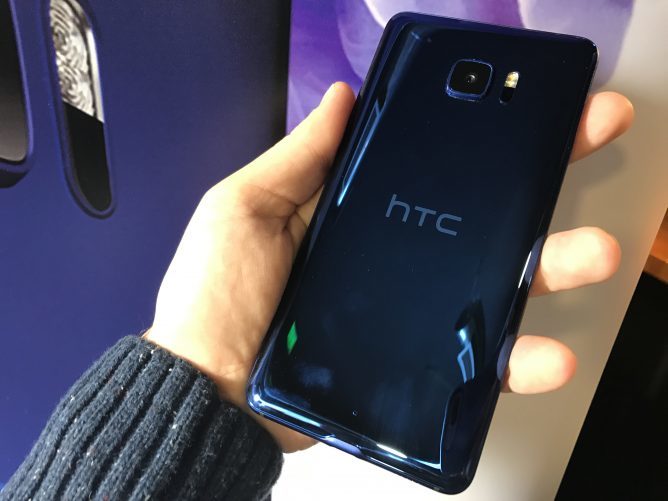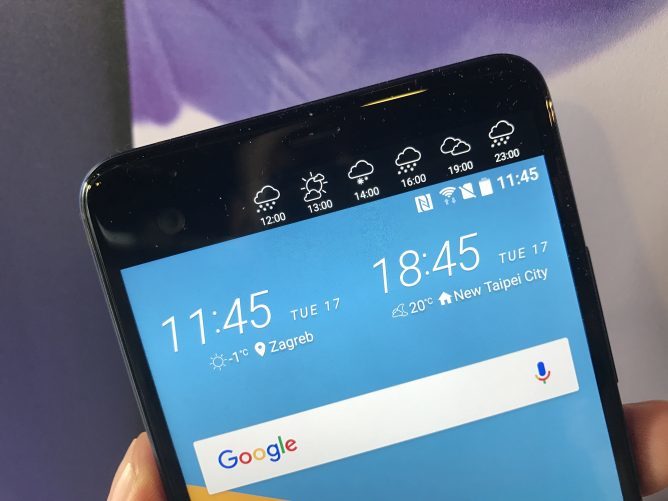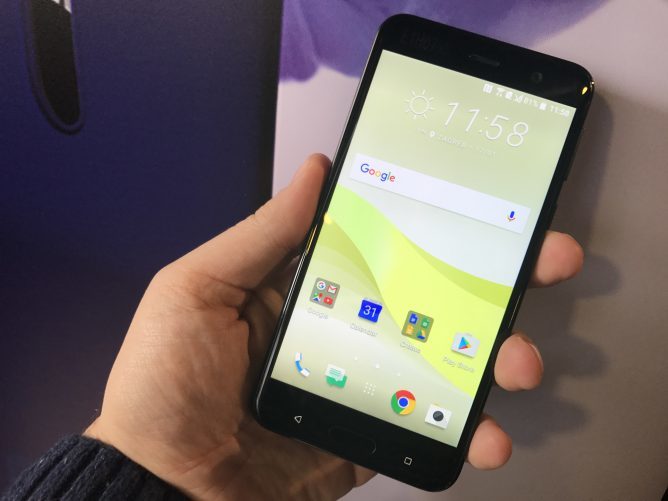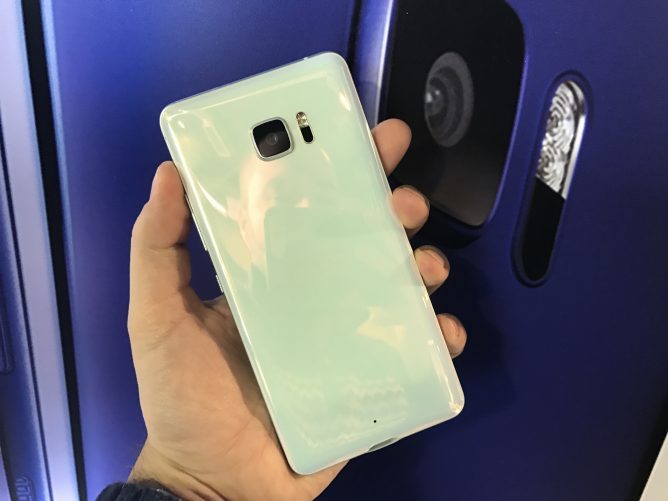HTC marked a new year with a new smartphone series, simply called “U,” and its design deviates from just about everything else we’ve seen from HTC.
The HTC U comes in two varieties. The more powerful, larger (and more interesting) HTC U Ultra has a 5.7-inch display and many flagship features, although HTC was reluctant to call it as such (suggesting HTC has something else lined up for Mobile World Congress in Barcelona).
The HTC U Ultra itself has three distinguishing features: an exceptionally credible finish and rounded glass unibody; a secondary display set above the main screen, which combines HTC Sense Companion with a form of AI; and U Sonic sound, which provides personalized sound output.
HTC smartphones have long had impressive builds, interesting software, and high-level sound reproduction. By improving them, it seems HTC is moving slightly beyond the evolutionary updates that have marked its recent spate of flagships.
The smaller device, HTC U Play, is a typical upper mid-range smartphone. Think of it as a compact version of the HTC U Ultra. But interestingly, its 5.2-inch display is about the same size as 2016’s flagship, the HTC 10.
HTC U Ultra Build
The HTC U Ultra’s finish rivals the best in the market, and its glass build feels impressive in hand. It is slightly, with a curvature increasing towards the sides (like on a car windshield). This unique curve provides greater resistance to drops, according to HTC as does the Gorilla Glass 5 surface (64GB) and Sapphire glass (128GB version). Also according to HTC, the phone’s unibody features five glass layers, with colors that flow over from one nuance to another, depending on the angle. HTC’s dubs this aesthetic Liquid Surface, and it’s available in blue, pink, white and black.
The only flaws we noticed in our hands-on time were the all-glass build is fingerprint magnet, and both smudges and dust are easy to spot. Fortunately, they are easy to wipe off without leaving streaks. HTC representatives claim it took two years to develop this finish. In that time, they also came up with a beautifully pretentious name: Optical Spectrum Hybrid Deposition.
The physical Home key sits under the display, next to the capacitive Back and Menu keys. The bottom sports the USB Type-C connector, and there is no 3.5mm audio input. Just like the iPhone 7, the device comes with a set of headphones that connect via USB Type-C, along with a short USB Type-C-to-3.5mm adapter.
HTC U Ultra Display and AI
HTC U Ultra has a 5.7-inch QHD Super LCD 5 display (1440 x 2560), resulting in a density of 513 pixels per inch. This is a little less than the smaller HTC 10, which has the same resolution. That said, no objections can be made about the imaging sharpness, color interpretation, saturation, contrast sustainability or display.
The secondary display is an important novelty, even if it’s suspiciously similar to the LG V10 and V20’s second-screen implementation. At 2.05 inches, it has a 16 x 1040-pixel resolution, which displays various shortcuts and functions, depending on the context or current smartphone task.
In stand-by, it serves as a UI for HTC’s personal AI assistant, dubbed the HTC Sense Companion. AI is a trend, one of those new technologies device makers are aggressively insisting upon, so it’s no surprise to see HTC jump on board. According to HTC, this “personal assistant,” which gets smarter with use thanks to the so-called deep learning technology built into the HTC Sense Companion, briefs users on the important information at the right time, similar to Google. How useful is it? We’ll have to wait for a full review to find out.
HTC equipped the U Ultra with four microphones, which are always active. Users can address the phone with a question or a task without have to shout, or hold the phone up to their face. It’s very similar to Amazon Alexa, and HTC confirms it will support multiple languages in the near future.
HTC U Ultra Audio
The HTC U Ultra’s third key feature is USonic. This audio technology adjusts the sound playback mode to the individual’s hearing. The packaged headphones feature a so-called ultrasonic beam that scans the user’s unique ear architecture, creating a personalized profile based on the readings. This, all according to HTC reps, and it justifies the 3.5mm audio port omission. The standard headphone input isn’t capable of forwarding ultrasonic beam information.
As far as the sound playback sans headphones, the HTC U Ultra is similar to the HTC 10, with lower frequencies coming out through the bottom speaker, and higher frequencies through the call speaker.
The rear-facing camera is also similar to the HTC 10’s, at least according to specifications. It too has a 12-megapixel resolution, 1.55-micrometer pixel size, phase/laser autofocus, optical image stabilization, and an f/1.8 lens. Unfortunately, both the camera hardware and software weren’t functional on our demo unit, so we can’t comment on picture quality.
Other HTC U Ultra specs include the Qualcomm Snapdragon 821, 4GB of RAM, and a 3000 mAh battery. This seems slightly unworthy of a flagship model at a time when the competition is announcing models with the recently-revealed Snapdragon 835. The price is flagship level, however, costing $749 when it hits the market in March.
HTC U Play
HTC U Play looks like a smaller HTC U Ultra. It has the same materials, and it’s even available in the same colors. Still, this is a 5.2-inch phone with a Full HD display, resulting in a pixel density of 428 ppi. It’s equipped with Mediatek’s octa-core Helio P10 processor and 3GB of RAM (32GB capacity), or 4GB RAM (64GB capacity). The microSD card slot can be used for another SIM, while the device has a 2500mAh battery. The rear-facing camera has 16 megapixels, f/2.0 lens, OIS, and a phase autofocus.
HTC U Play also comes with four microphones and HTC Sense Companion support, but it lacks the secondary display. It’s also equipped with USonic technology and it also does not have a 3.5-mm audio input.











